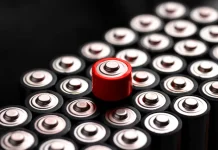In recent years, there have been some legal changes in Germany with regard to combating obsolescence risks for components in the electrical industry.
An important development was the introduction of the Electrical and Electronic Equipment Act (ElektroG) in 2015, which regulates the obligation of manufacturers and importers to dispose of and take back electrical equipment. This is to prevent e-waste from ending up in landfills and polluting the environment.
In addition, further legislative measures were taken in 2018 to increase the shelf life of products and strengthen consumer protection. To this end, the Closed Substance Cycle Waste Management Act (KrWG) was amended and expanded to include regulations on the containment of obsolescence risks.
Specifically, it created the opportunity for consumers to have their defective equipment repaired and required the manufacturer to provide replacement parts and repair information. In addition, a legal definition of planned obsolescence was introduced and manufacturers were prohibited from using components that have a limited service life.
Overall, these legal regulations aim to reduce obsolescence risks in the electrical industry and strengthen consumer protection. However, it remains to be seen whether these measures will actually be implemented in practice.
In 2021, the Act to Strengthen Consumer Protection in Competition and Trade Law (VGWG) was passed, which aims, among other things, to curb planned obsolescence. The law stipulates that, starting in 2022, manufacturers and retailers of electronic devices will be required to provide a clear indication of the product’s expected lifespan on the packaging and in advertising. This information is intended to provide consumers with better orientation when selecting products and to help ensure that long-lasting products are preferred.
In addition, the “Sustainable Product Policy Initiative” was launched in February 2021 with the support of the German Federal Ministry for the Environment. The initiative aims to promote sustainable product policies and encourage manufacturers to produce durable and repairable products. To this end, among other things, incentives are to be created for manufacturers who produce durable and repairable products, as well as labeling of products that meet certain sustainability criteria.
In addition, there are also developments at the European level. In 2021, the planned “Right to Repair” initiative was unveiled, with a series of measures to promote the repairability of electrical appliances and limit obsolescence risks. This includes, among other things, requiring manufacturers to provide spare parts and repair instructions and restricting the use of non-replaceable components.
Overall, it can be said that there is still a focus on combating obsolescence risks in the electrical industry and that there are further legal requirements and initiatives at national and European level aimed at promoting the repairability and longevity of products and strengthening consumer protection.







